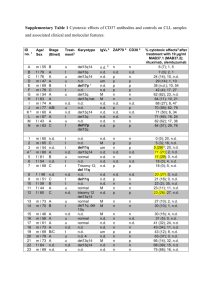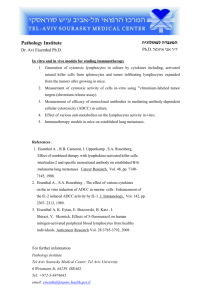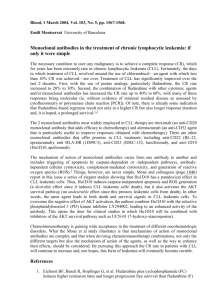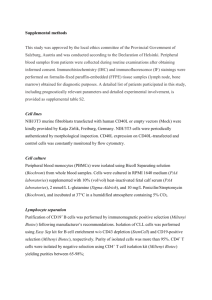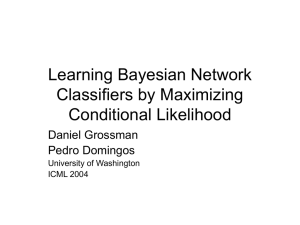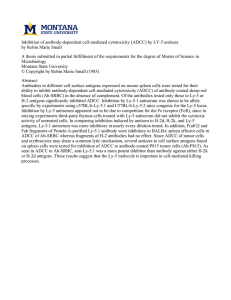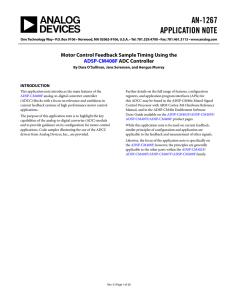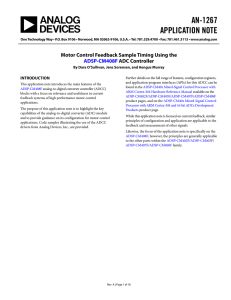Variable Contribution of Different Monoclonal Antibodies to NK Cell
advertisement
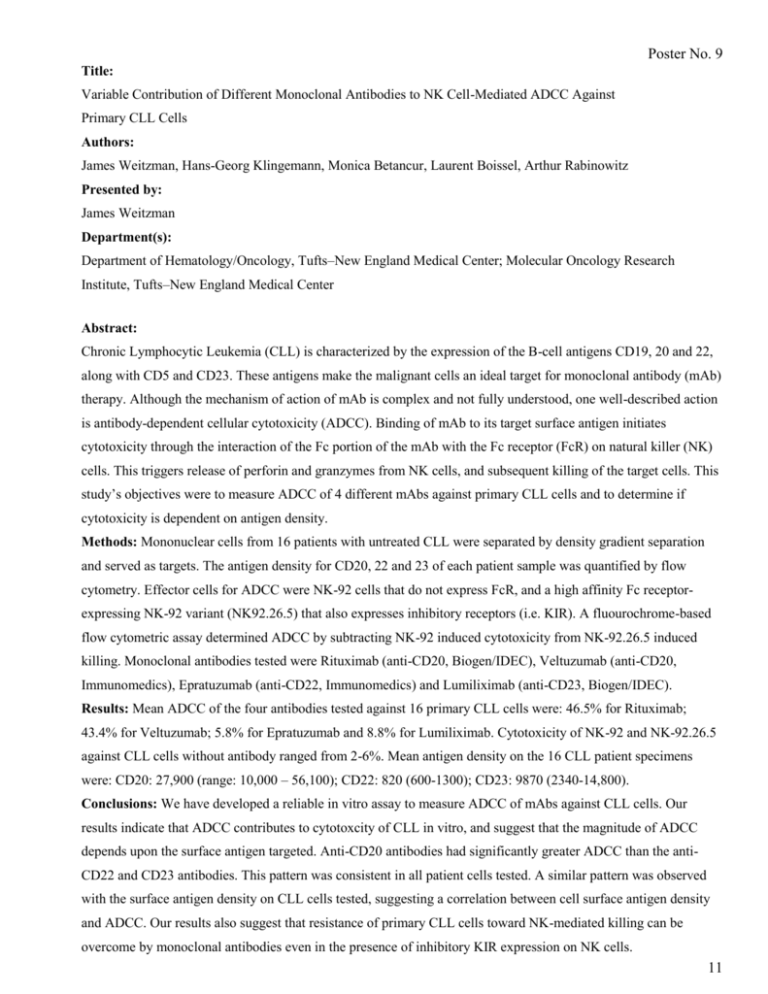
Poster No. 9 Title: Variable Contribution of Different Monoclonal Antibodies to NK Cell-Mediated ADCC Against Primary CLL Cells Authors: James Weitzman, Hans-Georg Klingemann, Monica Betancur, Laurent Boissel, Arthur Rabinowitz Presented by: James Weitzman Department(s): Department of Hematology/Oncology, Tufts–New England Medical Center; Molecular Oncology Research Institute, Tufts–New England Medical Center Abstract: Chronic Lymphocytic Leukemia (CLL) is characterized by the expression of the B-cell antigens CD19, 20 and 22, along with CD5 and CD23. These antigens make the malignant cells an ideal target for monoclonal antibody (mAb) therapy. Although the mechanism of action of mAb is complex and not fully understood, one well-described action is antibody-dependent cellular cytotoxicity (ADCC). Binding of mAb to its target surface antigen initiates cytotoxicity through the interaction of the Fc portion of the mAb with the Fc receptor (FcR) on natural killer (NK) cells. This triggers release of perforin and granzymes from NK cells, and subsequent killing of the target cells. This study’s objectives were to measure ADCC of 4 different mAbs against primary CLL cells and to determine if cytotoxicity is dependent on antigen density. Methods: Mononuclear cells from 16 patients with untreated CLL were separated by density gradient separation and served as targets. The antigen density for CD20, 22 and 23 of each patient sample was quantified by flow cytometry. Effector cells for ADCC were NK-92 cells that do not express FcR, and a high affinity Fc receptorexpressing NK-92 variant (NK92.26.5) that also expresses inhibitory receptors (i.e. KIR). A fluourochrome-based flow cytometric assay determined ADCC by subtracting NK-92 induced cytotoxicity from NK-92.26.5 induced killing. Monoclonal antibodies tested were Rituximab (anti-CD20, Biogen/IDEC), Veltuzumab (anti-CD20, Immunomedics), Epratuzumab (anti-CD22, Immunomedics) and Lumiliximab (anti-CD23, Biogen/IDEC). Results: Mean ADCC of the four antibodies tested against 16 primary CLL cells were: 46.5% for Rituximab; 43.4% for Veltuzumab; 5.8% for Epratuzumab and 8.8% for Lumiliximab. Cytotoxicity of NK-92 and NK-92.26.5 against CLL cells without antibody ranged from 2-6%. Mean antigen density on the 16 CLL patient specimens were: CD20: 27,900 (range: 10,000 – 56,100); CD22: 820 (600-1300); CD23: 9870 (2340-14,800). Conclusions: We have developed a reliable in vitro assay to measure ADCC of mAbs against CLL cells. Our results indicate that ADCC contributes to cytotoxcity of CLL in vitro, and suggest that the magnitude of ADCC depends upon the surface antigen targeted. Anti-CD20 antibodies had significantly greater ADCC than the antiCD22 and CD23 antibodies. This pattern was consistent in all patient cells tested. A similar pattern was observed with the surface antigen density on CLL cells tested, suggesting a correlation between cell surface antigen density and ADCC. Our results also suggest that resistance of primary CLL cells toward NK-mediated killing can be overcome by monoclonal antibodies even in the presence of inhibitory KIR expression on NK cells. 11


